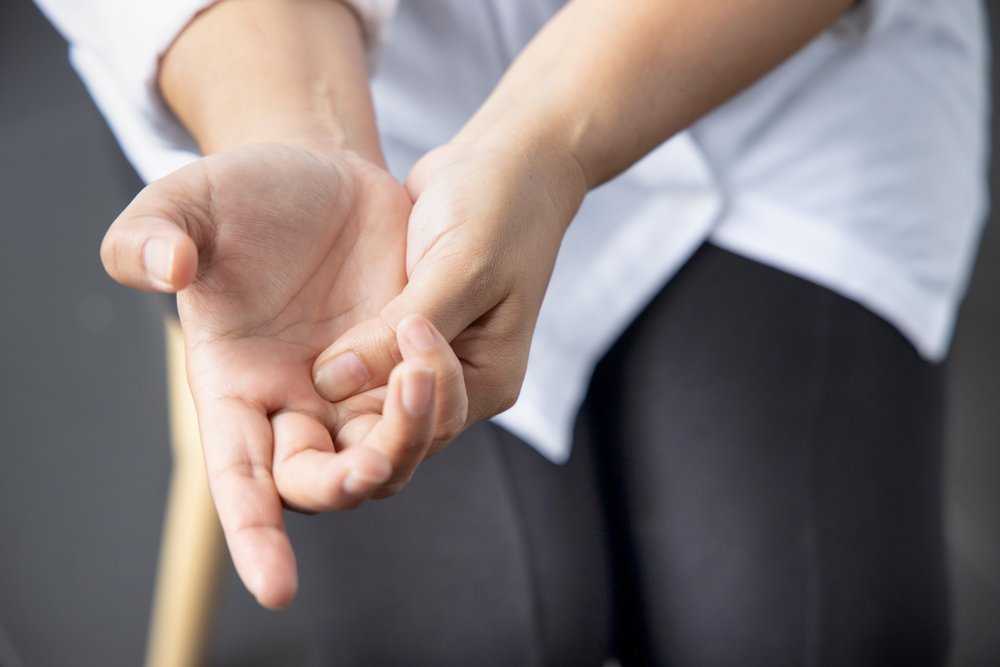Trigger Finger
What is Trigger Finger?
Trigger finger is a condition that results in the feeling of sticking or locking when straightening or bending the fingers. Trigger finger typically causes a finger to get stuck in a bent position and then may straighten with a snapping sensation. This condition results directly from issues with tendons that contribute to movement of the fingers and the thumbs. When this issue occurs in the fingers, the tendons that control the fingers cannot move smoothly in its surrounding area, thus creating swelling or a lump on the tendon. The most commonly affected areas of the hand are the ring finger and the thumb, but the condition can most definitely affect all areas.
Finger Anatomy
The muscles of the forearm are connected to the finger bones and thumb bone by flexor tendons. Flexor tendons are long structures that move through a tendon sheath structure in order to attach to the palm and the finger or thumb. Tendon sheaths are attached to the bones within the palm and the finger or thumb bones. Pulleys are bands of tissue that attach the flexor tendons to the finger bones when the fingers move. The A1 pulley is the structure that exists where the finger meets the palm and is most involved with the trigger finger condition.
What Are the Symptoms of Trigger Finger?
There are a number of trigger finger signs and symptoms. When experiencing this, you may notice a clicking sensation when bending or straightening the fingers or thumbs, which is one of the most common signs of the condition. Other symptoms include but are not limited to stiffness in the finger, a bump or lump at the base of the finger or thumb, a finger that appears stuck and that you are unable to straighten. Symptoms often feel worse in the morning and alleviate throughout the day. Symptoms are also more noticeable when trying to straighten the fingers or thumbs or when trying to firmly hold something.
What Causes Trigger Finger?
The causes of trigger finger are not fully distinguished but can often be linked to medical conditions, age, and excessive hand activities. Medical conditions such as diabetes and arthritis can increase one’s risk of developing trigger finger. It is also more common in older individuals and is not often seen in children. The use of the hand and fingers in forceful ways can also increase one’s risk of developing trigger finger.
How is Trigger Finger Treated?
Trigger finger can be treated both surgically and without surgery. Trigger finger surgery and treatment will be determined by a doctor through close examination.
Nonsurgical Treatment
When experiencing symptoms of trigger finger, your doctor will most likely resort to nonsurgical treatment methods at the start of your care. Rest will be suggested so that your finger or thumb will not be moved and can heal. The doctor may also give you a splint that is designed to keep the finger still and free from forceful movement. Additionally, stretching exercises may be advised in order to ease the finger or thumb back to regular motion. When stretching, stiffness can be relieved and increase flexibility so that range of motion can be improved. Your doctor may also recommend anti-inflammatory drugs, such as ibuprofen or naproxen to alleviate pain. Steroid injections are also an effective nonsurgical treatment option which are given through a needle into the tendon sheath.
Surgical Treatment
In more severe cases, your doctor will recommend surgery to correct the problem. The first type of procedure is called a percutaneous release. In this surgery, the doctor will numb the palm and then insert a needle near the tendon that is affected by the condition. The doctor will move the needle and the finger in order to loosen and make the tendon more flexible. In order to locate the tip of the needle and determine where the needle is targeting, the doctor may use an ultrasound technological device.
In surgical treatment for trigger finger, the goal is to release the A1 pulley, for this structure often causes the limitation of tendon movement. When releasing the structure, the tendon will be able to move smoothly and will be able to free the structures from the clicking and locking sensation.
Trigger finger surgery recovery takes some time and may require you to wear a splint for about six weeks. The recovery process includes rest and the use of anti-inflammatory drugs. Sometimes, patients with trigger finger may experience soreness in the palm after the surgery. To help reduce pain and swelling, your doctor may advise you to raise your hand above your heart. Following the surgery, you will be able to move the affected finger or thumb, but swelling and stiffness may occur for up to six months. If stiffness and pain continues for extended time following the procedure, your doctor may recommend evaluation by a hand therapist or orthopedic surgeon.
To learn more about Trigger Finger treatment options in the Fort Myers, Estero and Naples area, contact Orthopedic Center of Florida.
Resources
- Hand Arthritis
- Thumb Arthritis
- Wrist Arthritis
- Elbow Osteoarthritis
- Carpal Tunnel and Frequently Asked Questions
- Trigger Finger and Frequently Asked Questions
- Tennis Elbow
- Basal Joint Osteoarthritis
- Colles Fracture
- De Quervain’s Tenosynovitis
- Distal Radius Fracture (Broken Wrist)
- Dupuytren’s Disease
- Flexor Tendon Injuries
- Fractures of the Finger
- Fractures of the Hand (Metacarpal Fractures)
- Lateral Epicondylitis (Tennis Elbow)
- Medial Epicondylitis (Golfer’s Elbow)
- Nerve Injuries of the Hand
- Osteoarthritis of the Hand
- Rheumatoid Arthritis of the Hand
- Triangular Fibrocartilage Complex Tears

Meet our Hand, Wrist & Elbow Doctors:
Sandra B. Collins, MD
Board Certified, Fellowship Trained Orthopedic SurgeonHand and Upper Extremity Specialties[button...
Alicia F. Cowan, MD
Fellowship Trained SpecialistHand and Upper Extremity SpecialtiesCrush Injuries to Hand...
Spencer P. Skinner, MD
Board-Certified, Fellowship-Trained Orthopedic Surgeon Specializing in Hand, Upper Extremity, and Peripheral Nerve SurgeryOrthopedic Services and Sports Medicine SpecialtiesShoulderDislocations &...



